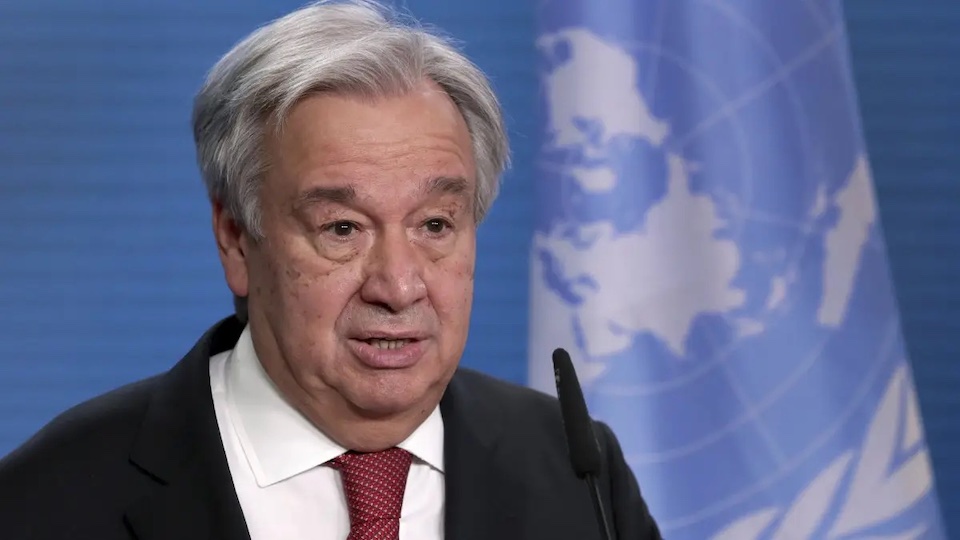In a striking and urgent call for climate action, UN Secretary-General Antonio Guterres recently visited the Himalayan region to witness the devastating impact of climate change on rapidly melting glaciers. As the Himalayas face unprecedented glacial loss and its far-reaching consequences, Guterres issued a passionate plea to the world to “stop the madness” of climate change.
The Melting Rooftop of the World
“The rooftops of the world are caving in,” remarked Antonio Guterres during his visit to the Everest region in Nepal. This powerful statement encapsulates the dire situation the Himalayas are currently facing. Over the last three decades, Nepal has lost nearly a third of its ice, and glaciers are receding at an alarming rate. In the past decade alone, Nepal’s glaciers melted 65 per cent faster than in the previous one, highlighting the accelerated pace of climate change in this region.
The Impact on Freshwater Supply
One of the most alarming consequences of melting Himalayan glaciers is the impact on freshwater supply. Glaciers in the Himalayan and Hindu Kush ranges are vital reservoirs that supply fresh water to over a billion people. These glaciers feed ten of the world’s most important river systems, including the Ganges, Indus, Yellow, Mekong, and Irrawaddy, providing billions of people with essential resources such as water, food, energy, clean air, and income.
The rapid melting of glaciers is a direct result of climate change and has serious implications for communities living in the region. As these glaciers shrink, river flows decrease, posing a significant threat to the people who rely on these rivers for their livelihoods. Not only does this impact the availability of drinking water, but it also disrupts agriculture, energy generation, and ecosystems.
The Himalayan glaciers are often referred to as the “Water Tower of Asia.” They play a crucial role in regulating the flow of water in the region. When glaciers melt, there is an initial phase of increased river flow, which can lead to destructive floods. These floods not only damage infrastructure but also displace entire communities. In the long term, however, the glaciers’ depletion will result in reduced river flows, posing a more catastrophic threat to the people living downstream.
Climate Change: The Culprit
The accelerated melting of Himalayan glaciers can be directly attributed to climate change. As global temperatures continue to rise, the world has warmed an average of nearly 1.2 degrees Celsius since the mid-1800s. This warming has caused a cascade of extreme weather events, including more intense heatwaves, severe droughts, and increasingly ferocious storms, exacerbated by rising sea levels. These impacts hit the most vulnerable and impoverished communities the hardest, despite their minimal contribution to the fossil fuel emissions that drive climate change.
Antonio Guterres’s visit to the Himalayas served as a powerful reminder of the urgent need to address climate change. He issued a compelling plea, stating, “The glaciers are retreating, but we cannot. We must end the fossil fuel age.” The Secretary-General called for immediate action to protect those on the frontlines of climate change and limit global temperature rise to 1.5 degrees Celsius to avert the worst of climate chaos. Guterres emphasized that the world cannot afford to wait any longer.
To effectively combat climate change and its devastating impact on the Himalayas, we must address the root cause: the reliance on fossil fuels. The burning of fossil fuels is the primary driver of greenhouse gas emissions that contribute to global warming. Transitioning to cleaner and more sustainable sources of energy is essential to mitigate the effects of climate change and preserve the Himalayan glaciers.
While the challenges posed by climate change are global, international cooperation is crucial in finding solutions. Nations must work together to reduce emissions, invest in renewable energy, and develop sustainable policies that protect our planet and its vital ecosystems. The Himalayas, being a shared resource for many countries, require collaborative efforts to preserve them.
At the local level, initiatives and resilience-building efforts can play a significant role in adapting to the changing climate. Communities in the Himalayan region must be empowered with knowledge and resources to cope with the immediate consequences of glacial melting. This includes better disaster preparedness, efficient water management, and sustainable agricultural practices.
Antonio Guterres’s visit to the Himalayas serves as a stark reminder of the urgent need to address climate change. The time to act is now, as we cannot afford to wait any longer to stop the madness of climate change.

